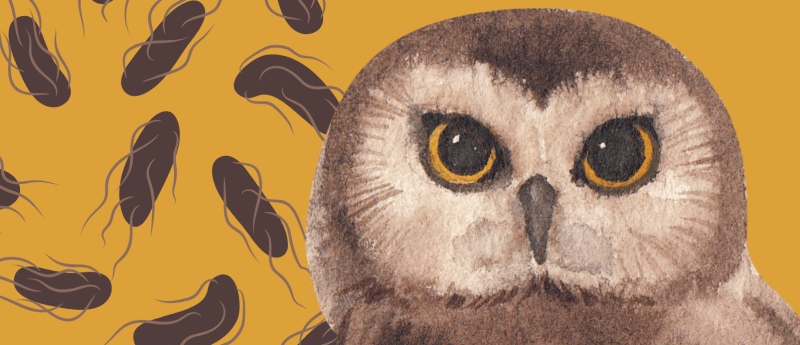Antibiotic-resistant E. coli found in wild birds

Wild birds at a Brazilian rehabilitation center are carriers of antibiotic-resistant Escherichia coli, common in hospital-acquired human infections.
Researchers supported by the São Paulo Research Foundation (FAPESP, Brazil) have identified antibiotic-resistant E. coli clones in the intestinal tracts of two wild birds receiving care at a local rehabilitation center. The finding underscores the value of wild animal monitoring to identify pathogens that are potentially dangerous to humans.
“E. coli is a common bacterium in the intestinal tract of many animals, including humans. It becomes a problem when it enters the bloodstream or causes urinary tract or kidney infections, particularly when it affects people with compromised immune systems and in hospital settings. In these people, multidrug-resistant clones such as these often lead to death,” explained Fábio Sellera, a professor at Metropolitan University of Santos (UNIMES, São Paulo, Brazil) and one of the study’s coordinators.
 Longevity lingers in the lysosome
Longevity lingers in the lysosome
Changes in Caenorhabditis elegans lysosome metabolism can be carried through generations via inherited histone modifications.
Nature’s pathogen reservoirs
A total of 49 wild animals were sampled as part of the study. A vulture and an owl were found to be carriers of extended-spectrum β-lactamase (ESBL)-producing E. coli strains. These strains belonged to the sequence type (ST) ST10 and ST155, which is associated with widespread antimicrobial resistance.
Neither birds showed clinical signs of infection, but the study was unable to determine whether the animals had colonized E. coli in the wild, prior to arriving at the rehabilitation center, or at the center itself. However, genomic studies have shown that the genes for antibiotic resistance can easily transfer between E. coli clones and even other bacterial species.
“As a result, even bacteria that have never had contact with antibiotics or polluted environments, which also select for this type of agent, can become resistant. That’s why there’s a need for continuous monitoring of the environment and potential hosts,” commented Nilton Lincopan, a professor at the University of São Paulo (Brazil) and another coordinator of the study.
Watching the horizon for the next pandemic
The study authors hope that their research highlights the value of rehabilitation centers and recommend that testing when animals are admitted becomes routine. This would enable the isolation of colonized animals and decolonization of those with medically important strains before they are released back into the wild.
“Rehabilitation centers offer a valuable opportunity to monitor the presence of these agents in our fauna. Global mobilization and greater financial investment are needed to expand epidemiological surveillance and establish protocols for these centers in order to reduce the chances of transmission between animals or from humans to them,” Sellera concluded.